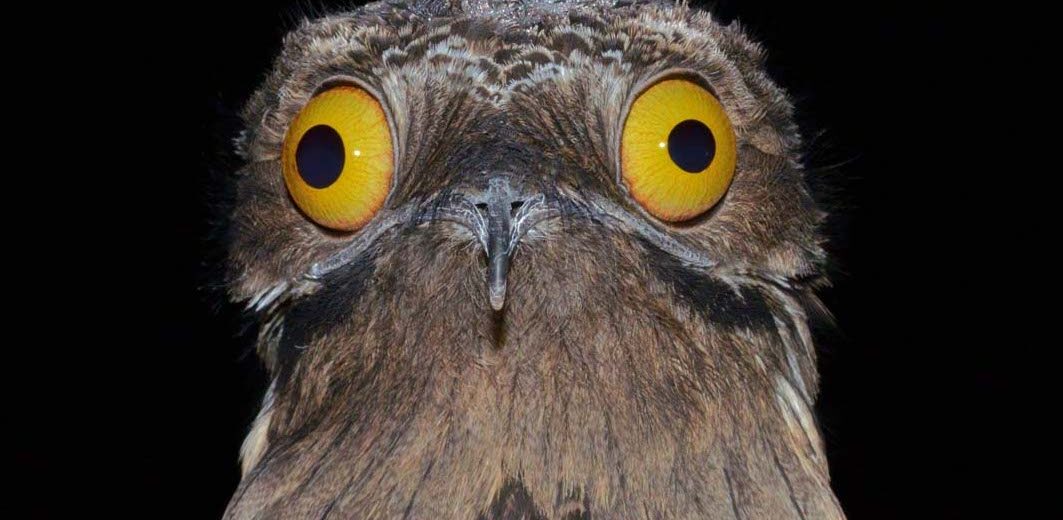
Blending in so perfectly that they look just like a tree stump we have the potoo. The potoo is an carnivorous (eats meat) bird from Central and South America. Unlike many birds in the rainforests, potoos use camouflage rather than flashy colors. Being nocturnal (active at night), they sit motionless throughout the day, and awaken at night to hunt insects and even other birds with their huge mouths. Fortunately, all 7 known potoo species are listed as Least Concern by the IUCN.
First the Stats…
Scientific name: Nyctibius
Weight: Up to 23 ounces
Length: Up to 23 inches
Wingspan: Up to 28 inches
Lifespan: Up to 14 years
Now on to the Facts!
1.) This bird has small openings along the bottom of their eyelids that let them see with their eyes closed.
2.) The potoo has a deep, throaty squawk that has startled rainforest visitors! These odd birds have been touted as having one of most unusual calls of any bird.
3.) They prey on beetles, moths, grasshoppers, and termites. However, they have also been documented eating other birds!
4.) Potoos sit motionless on stumps or in trees all day and only wake after dark to eat.
5.) Monogamy runs deep with these critters. They mate for life, in most cases.
But wait, there’s more on the potoo!
6.) Males incubate the single egg during the day and both take turns incubating at night, for 1 month, till the egg hatches. The chicks stay with their parents for approximately 2 months.
7.) Because they can’t fly as acrobatically as bats, they have evolved to have very large mouths. They use these large mouths to catch moths and other flying insects.
Did you know…?
There are actually 7 known species of potoo. Each species looks quite different from the next.
8.) During the prehistoric era, potoos were globally distributed. Now they only reside in the rainforests of Central and South America.
9.) Their predators include falcons, howler monkeys, capuchin monkeys, and spider monkeys.
10.) Females lay a single egg in a hollowed out tree branch and don’t use any nesting materials as this aids in camouflage.
But wait, there’s still more on the potoo!
11.) Nesting potoos copy their parents by sitting motionless during the day.
Did you know…?
The cry of the potoo is also seen as an ill omen, that is associated with doom, death, and tragedy.
12.) An Amazonian tale about the potoo’s call states that 2 children, abandoned in the forest by their parents, who were too poor to feed them, eventually turn into potoos. They are forever calling out “mama” to the mother that left them.
13.) The 7 known potoo species are: rufous, great, long-tailed, white-winged, Andean, common, and northern.
14.) Potoos are able to catch flying insects and even other birds in mid air, using their huge mouths.
15.) These birds are solitary by nature.
Now a Short Potoo Video!
Now a Short Video of a Potoo call!
Also, check out the Critter Science YouTube channel. Videos added frequently!
Want to suggest a critter for me to write about? Let me know here.




Leave a Reply